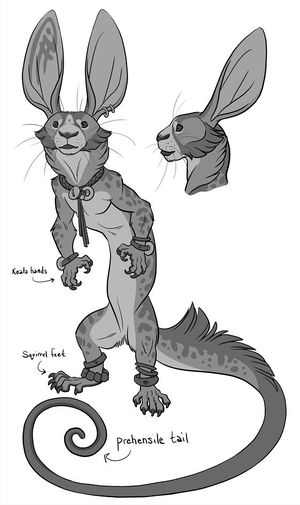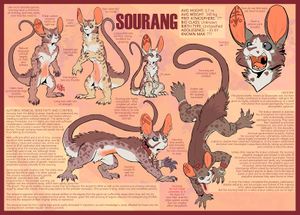Sourang


Overview
The Sourang are a large, quadrupedal, omnivorous species native to the terraformed planet now known as Krakuntec IV. Most of The population now exists either as stowaways aboard Krakun vessels, or as pests inside homes on various Krakun home worlds.
Culture
Sourang are typically highly xenophobic, believing themselves to be smarter than all other races, including the krakun. Their culture promotes trade, and supports the skeleton of a capitalist social structure.
Traditionally, sourang colonies do not have complex government or much leadership of any kind. Their society is maintained by the practice of promise making between individuals and groups. Sourang culture treats promise making in the same way that other races treat trade of goods. A promise to a sourang is the same as an object, a good that is exchanged with someone to obtain something else. To break a promise is the same as stealing another individual’s possession.
Appearance
Sourang are fairly large, measuring 2.5 to 3.5 meters in length, and weighing anywhere from 300 to 360 kilograms. They have relatively short fur all over their bodies, however the fur on their rump is longer. Their fur ranges in color from light brown, to reddish brown, to grey, and often has speckles of other colors mixed throughout their coats.
Music
While sourang do not have distinct melodic traditions, they are capable of recognizing pitches and learning to play pitched instruments with little biological interference. The majority of sourang musical tradition however is rooted in an extremely rich percussion heritage. Sourang have an unusually high sensitivity to differences between supposedly simultaneous strikes, being able to detect two distinct strikes that are as close to 20 milliseconds from each other.
This quirk of biology allows sourang percussion music to become extremely complex rhythmically, making extensive use of polyrhythms and very fast note runs. Due to the unique biology of their paws, they can grasp and create usable pivots with two drumsticks in each hand, allowing experienced percussionists to achieve a roll speed of up to 4000 strikes per minute.
